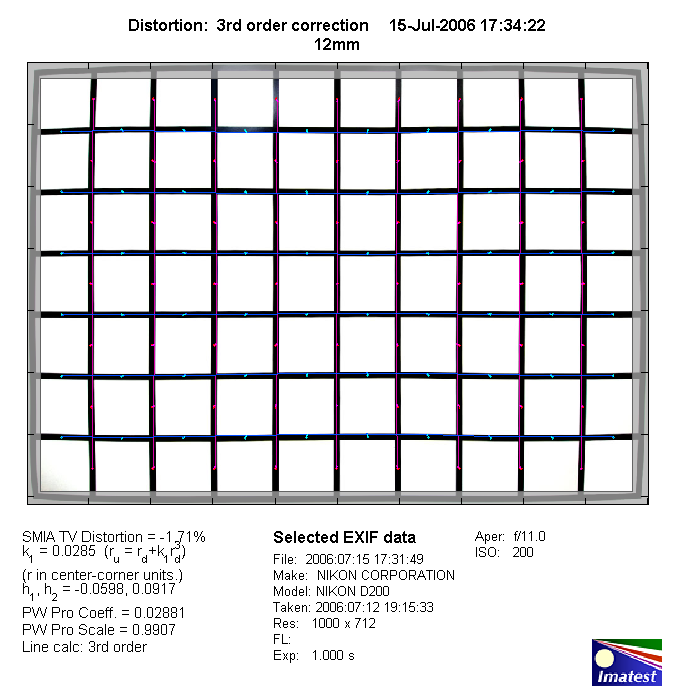|
Nikkor AF-S 12-24mm f/4G IF-ED DX - Review / Test Report - Analysis |
|
Lens Reviews -
Nikon / Nikkor (APS-C)
|
|
Page 2 of 3
Distortion
At about ~1.7% the Nikkor shows a relatively pronounced degree of barrel distortion
at the wide end of the zoom range changing to slight pincushion distortion at 18mm
and 24mm. Compared to other lenses in this range this is a pretty good characteristic.
|
Move the mouse cursor over the focal length text marks below to observe the respective distortions
|
| 12mm |
18mm |
24mm |
|

|
The chart above has a real-world size of about 120x80cm.
Vignetting
At wide-open aperture the Nikkor shows a noticeable degree of vignetting regardless
of the focal length - this is quite typical for dedicated APS-C lenses.
Stopping down to f/5.6 and more so to f/8 reduces the problem significantly to a
degree which should no longer be relevant under field conditions.

MTF (resolution)
The Nikkor AF-S 12-24mm showed very impressive resolution figures in the MTF lab.
Unlike many other lenses with a reduced image circle it is capable to combine an
excellent center performance with very good borders and generally still very good
extreme corners. The only exception is 12mm @ f/4 where the extreme border performance
drops to good quality. Some users complained about soft corners at wide-open
aperture at 12mm - this probably originates in a quite pronounced degree of field
curvature at 12mm (which bends the border portion of the focus plane towards the
background resulting in out-of-focus borders in the foreground).
Despite the different optical designs it is remarkable that the MTF characteristic
is very similar to the Tokina AF 12-24mm f/4 AT-X Pro DX.
Please note that the MTF results are not directly comparable across the different systems!
Below is a simplified summary of the formal findings. The chart shows line widths per picture height (LW/PH) which can be taken as a measure for sharpness.
If you want to know more about the MTF50 figures you may check out the corresponding Imatest Explanations
Chromatic Aberrations (CAs)
Lateral CAs (color shadows at harsh contrast transitions) are relatively well controlled
for an ultra-wide zoom lens. That said the lens still shows a quite pronounced degree
of CAs at large aperture settings in the lower half of the zoom range. Stopped down
and at 24mm CAs are a lesser problem.
Please note that CAs are no principal show-stopper because they can easily be corrected
via various tools such as the Adobe Photoshop RAW converter or Debarrelizer (a Photoshop plug-in).

|